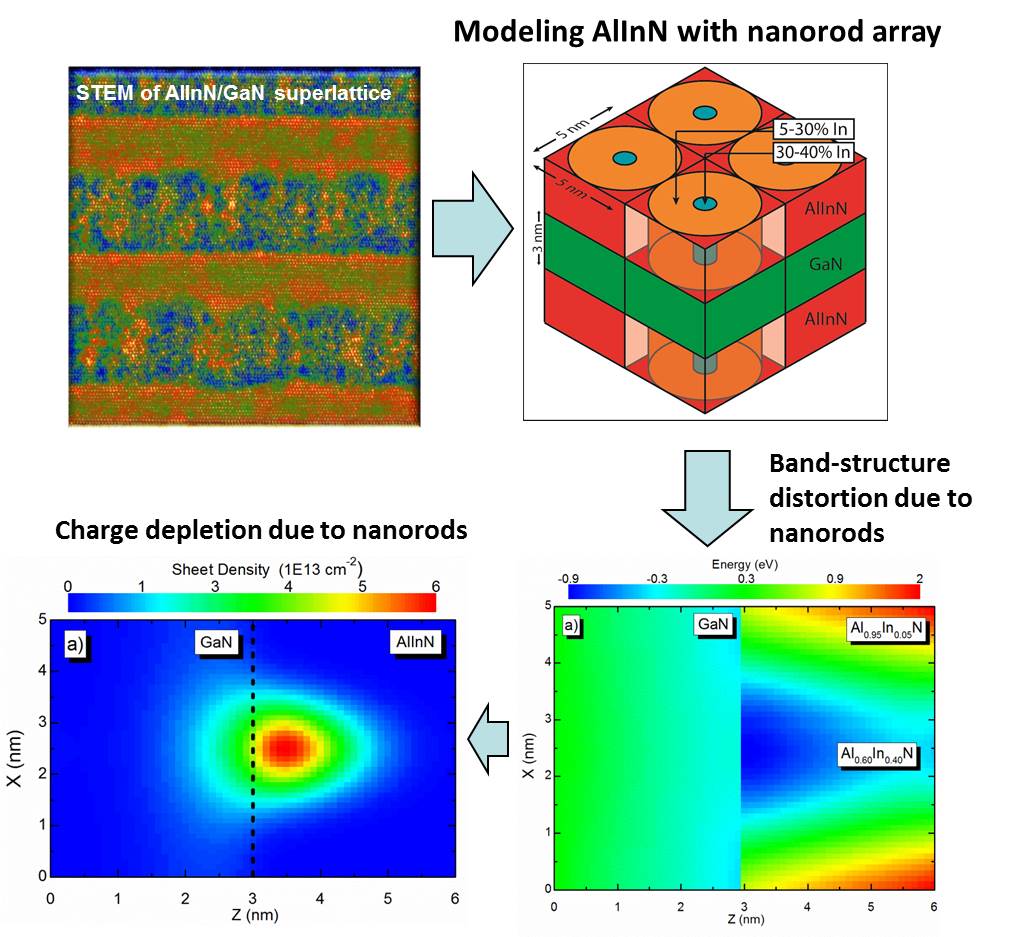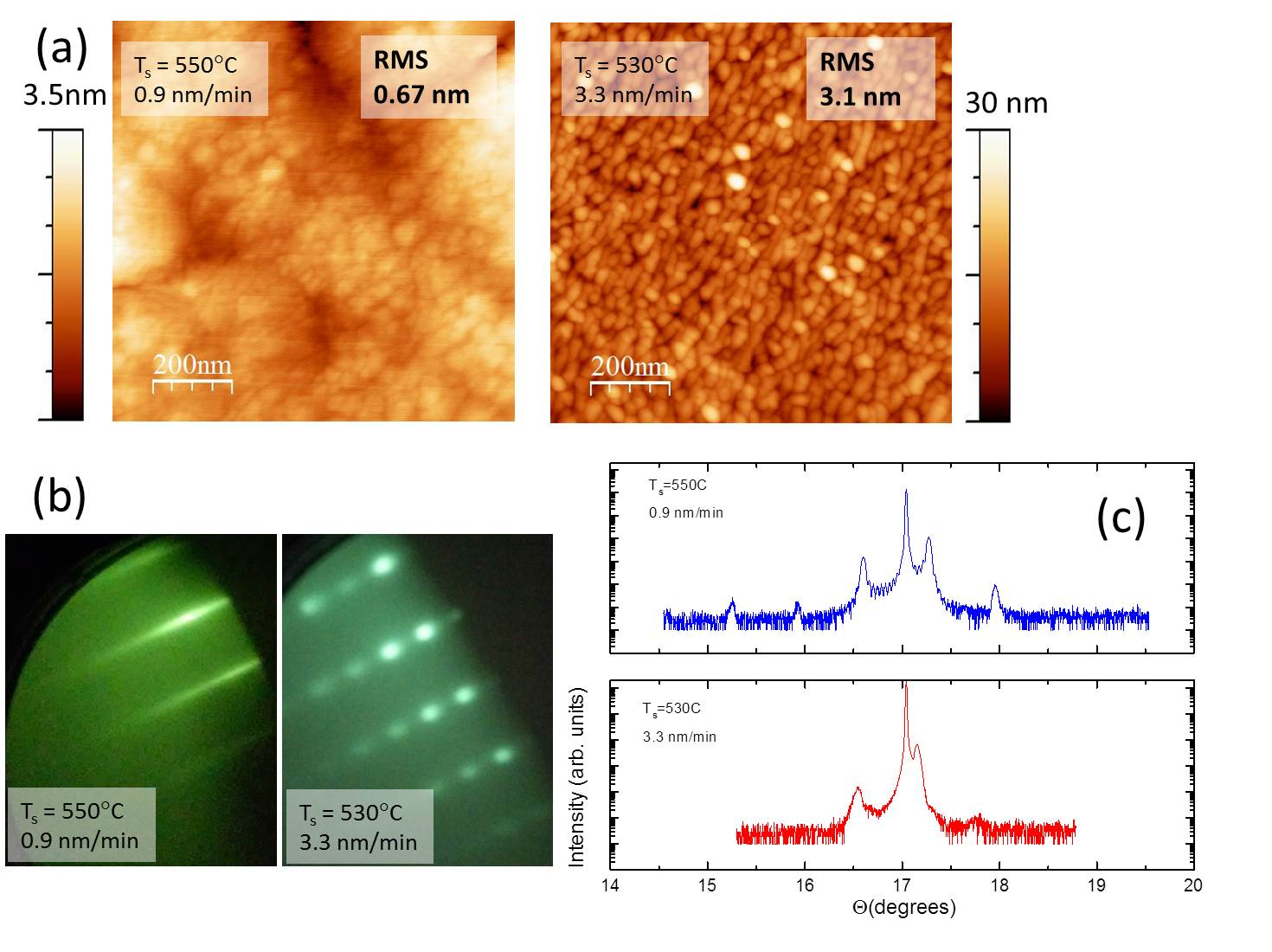Lattice-matched AlInN/GaN superlattices

We are investigating the near-infrared intersubband absorption in strained AlGaN/GaN and lattice-matched AlInN/GaN superlattices grown by plasma-assisted molecular-beam epitaxy. For AlGaN/GaN, we obtained good theoretical agreement with experimental measurements of transition energy, integrated absorbance and linewidth by considering many-body effects, interface roughness and calculations of the transition lifetime. For the AlInN/GaN system, initial experimental measurements of the integrated absorbance due to the superlattice transitions produced values more than one order of magnitude lower than AlGaN/GaN heterostructures at similar doping levels. Furthermore, observed transition energies were roughly 150 meV higher than expected. The weak absorption and high transition energies measured in these structures was attributed to columnar alloy inhomogeneity in the AlInN barriers observed in high angle annular dark field scanning transmission electron microscopy (see figure of HAADF-STEM). We simulated the effect of these inhomogeneities using 3D band structure calculations. The inhomogeneities were modeled as AlInN nanorods with radially varying In composition embedded in the barrier material of the superlattice. We showed that inclusion of the nanorods leads to the depletion of the QWs due to localization of charge carriers in high In containing regions. The higher energy of the intersubband transitions was attributed to the relatively uniform regions of the QWs surrounded by high Al (95%) composition barriers. The calculated transition energy assuming Al0.95In0.05N barriers was in good agreement with experimental results.
Most recently, we were able to drastically enhance intersubband absorption in AlInN/GaN superlattices by optimizing AlInN growth conditions. The integrated absorption was increased more than an order of magnitude by reducing the AlInN growth rate to 0.9-nm/min, increasing the growth temperature to 550°C, and placing Si into two d-doping sheets. These optical results are consistent with reduced alloy inhomogeneity and reduced interface roughness as suggested by HRXRD and AFM data. For the transition energy, we obtained relatively good agreement between experiment and simulations. Our results indicate that the ISBA of AlInN/GaN superlattices is comparable to that of the highest-quality AlN/GaN materials grown under optimal conditions at high temperature. Unexpectedly, the near-infrared integrated intensity of the heaviest doped samples exceeds theoretical calculations of a simplified model that assumes accuracy of structural parameters and considers barrier doping as the only free parameter. Further work is needed to elucidate Si activation energy in AlInN and to fully reproduce ISBA integrated intensity in AlInN/GaN superlattices.

